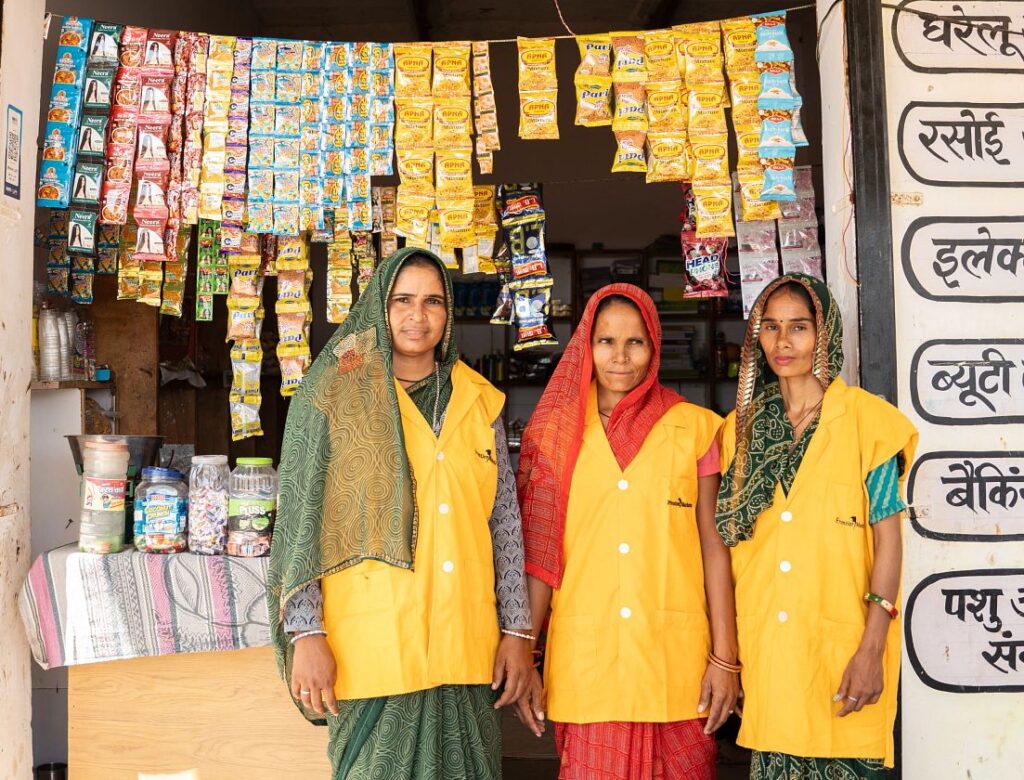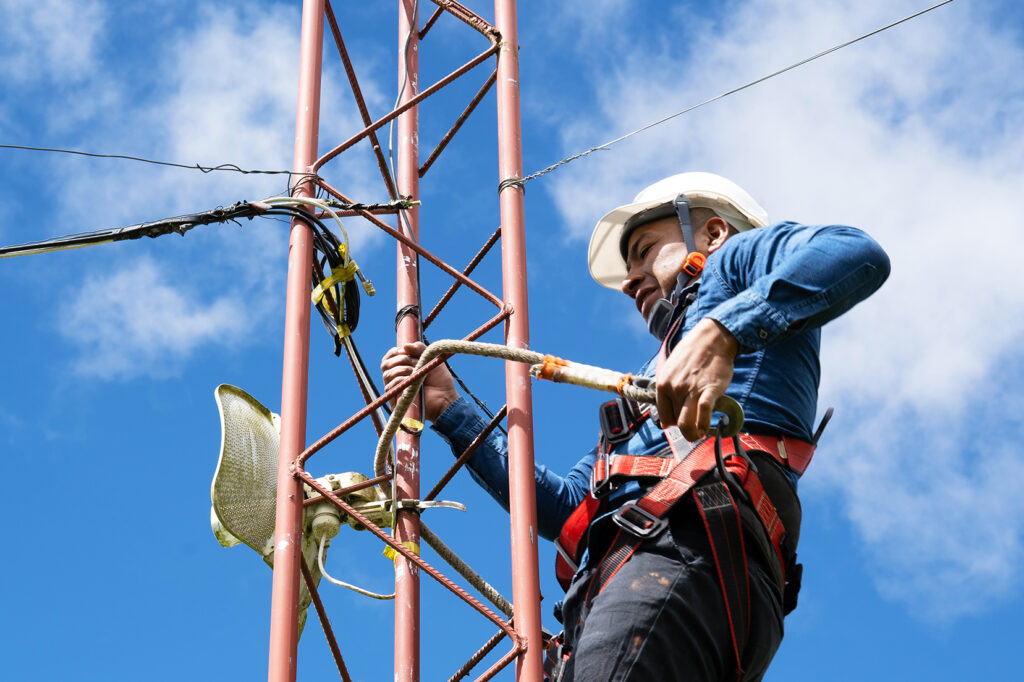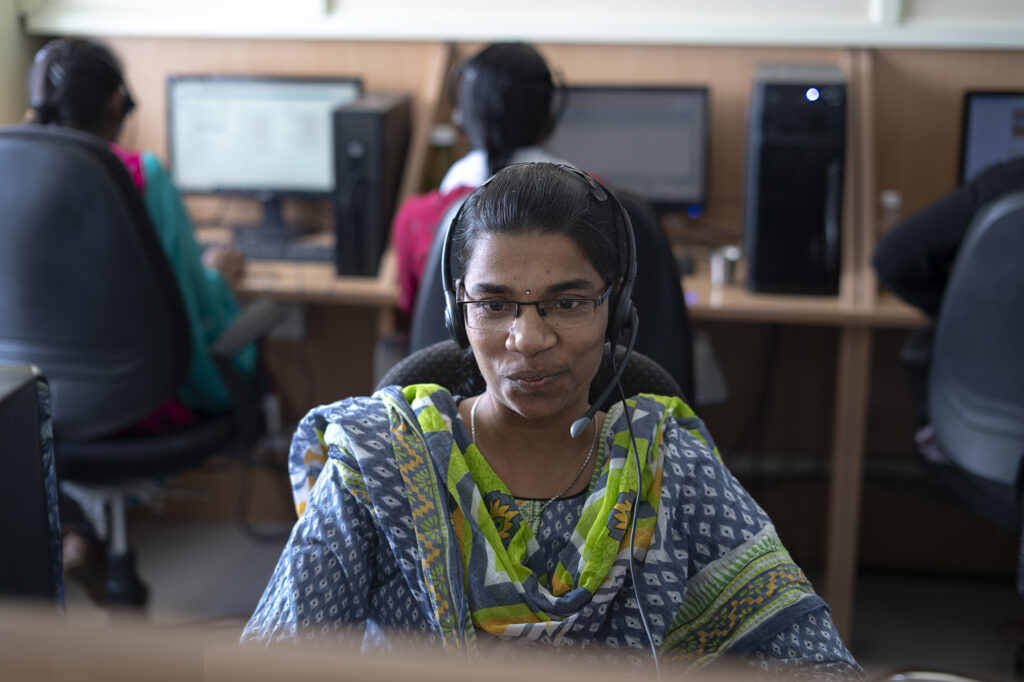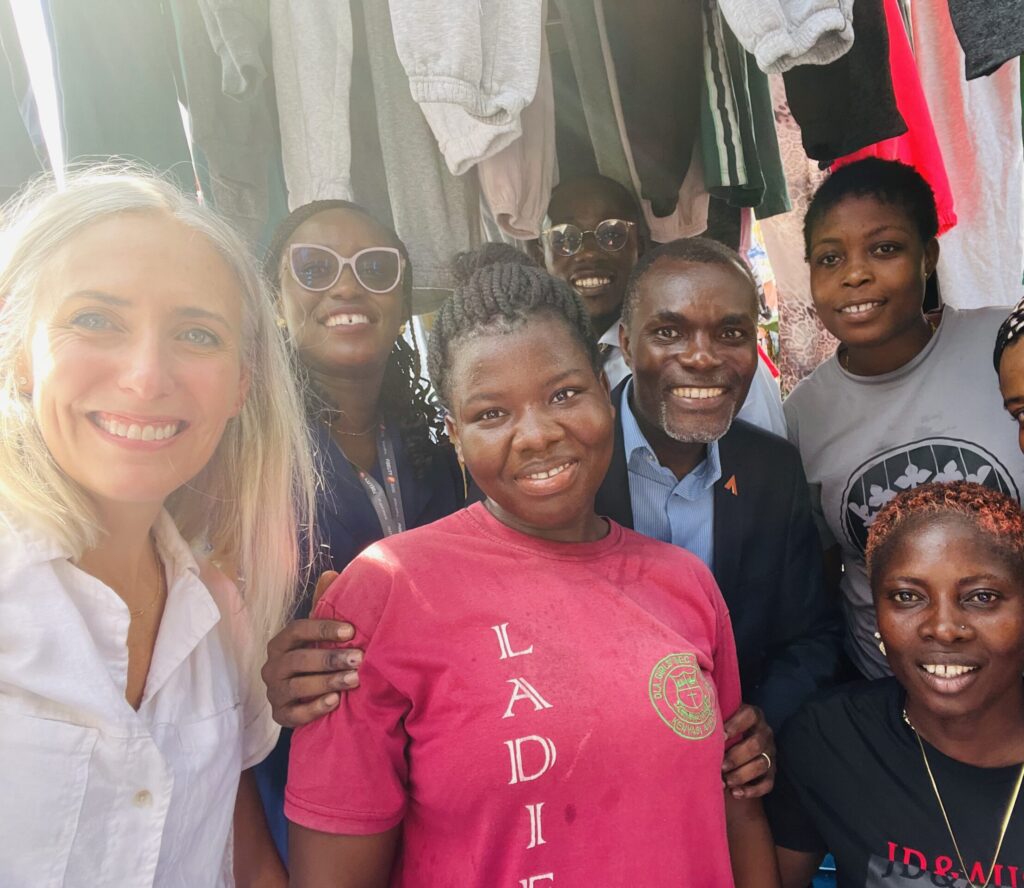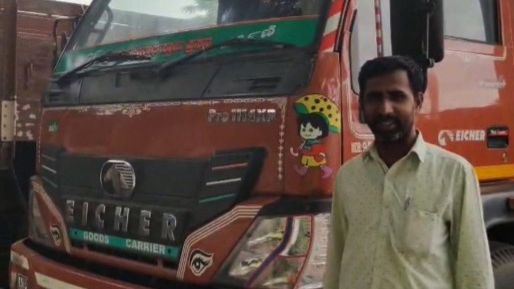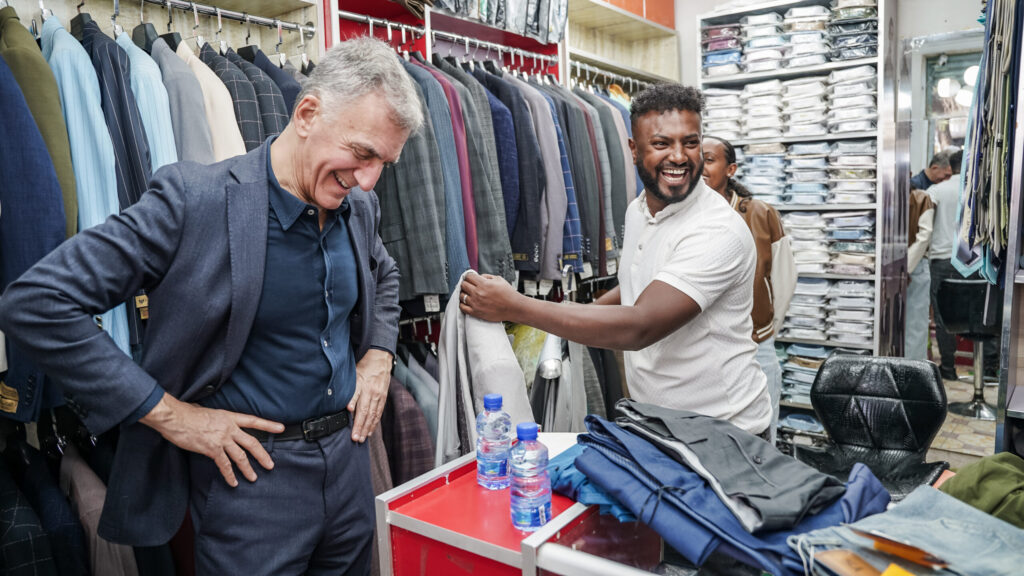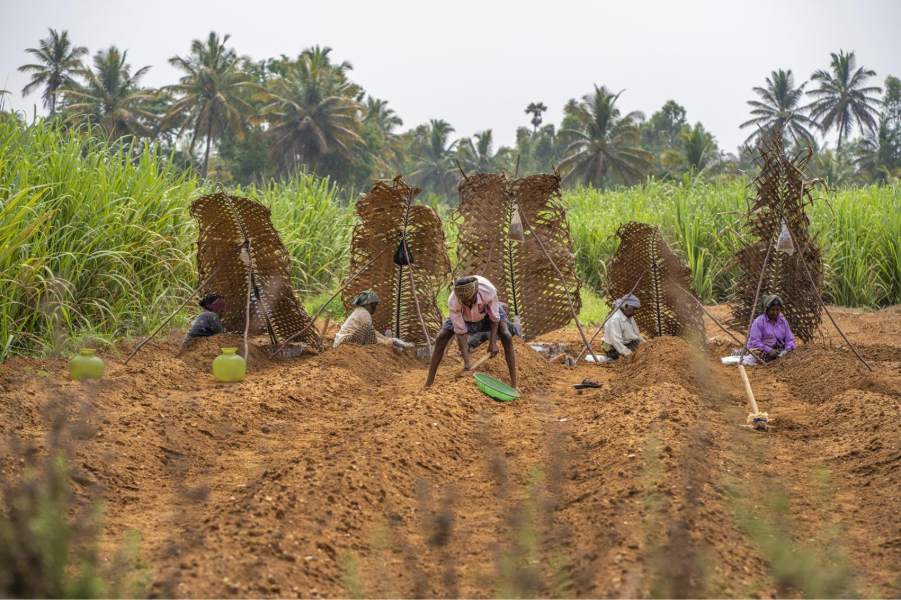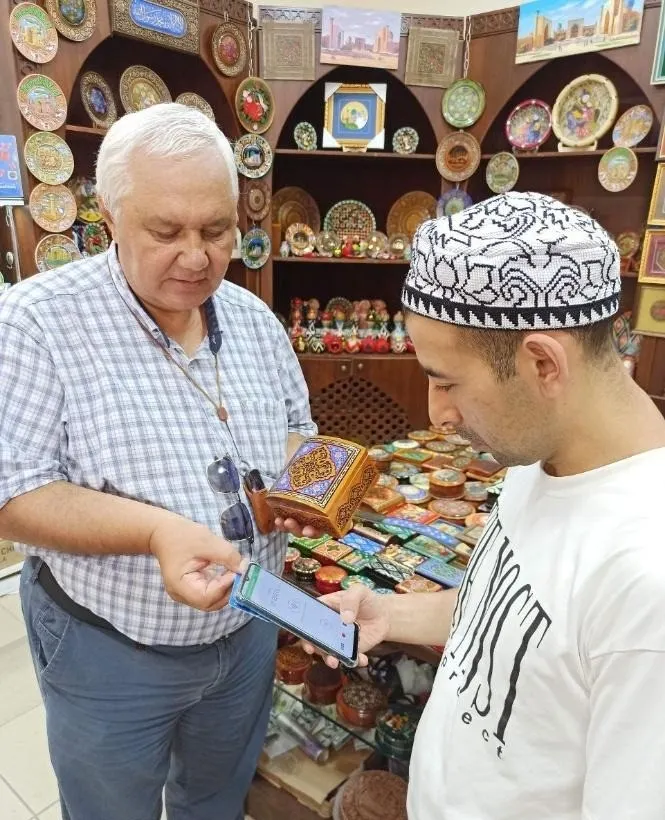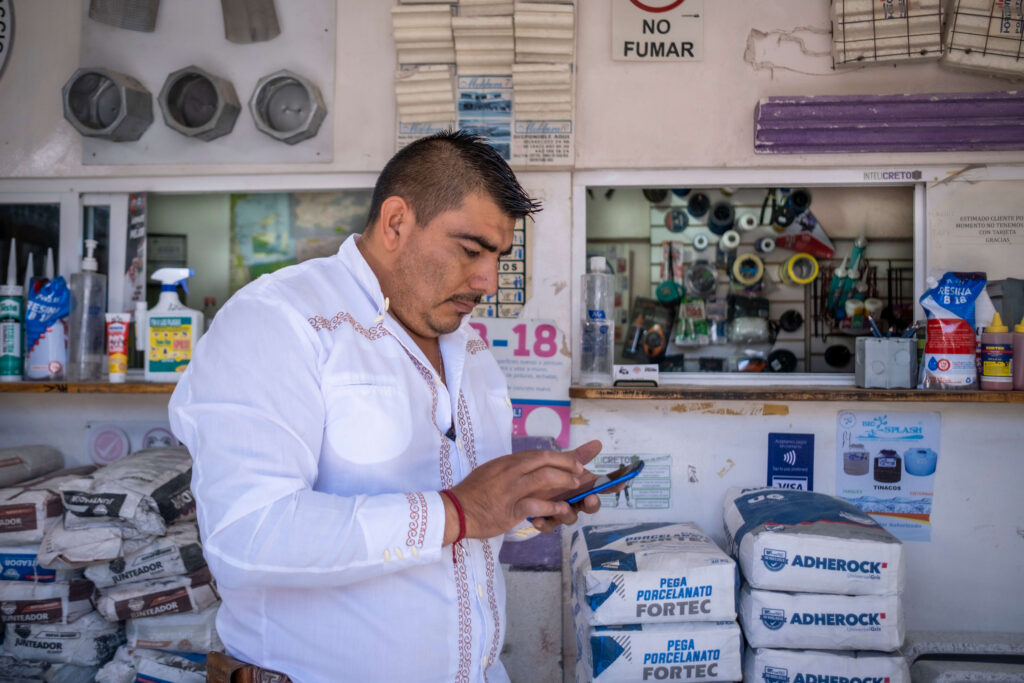
After decades of progress in reducing poverty, the past few years have taken a devastating toll on the world’s most vulnerable, low-income people. For the first time in our lifetimes, almost all the major indicators are moving in the wrong direction. This year, up to 95 million people will fall into extreme poverty — living on less than $1.90 per day — according to the World Bank. In addition, hundreds of millions of low-income people are struggling to make ends meet. They are hit the hardest by food shortages, supply chain bottlenecks, and widespread inflation.
At the same time, one indicator is showing significant progress, providing a ray of hope. We’re seeing a massive acceleration in digitization and financial inclusion — spurred by the pandemic — that is prompting more people and small businesses to switch from cash to digital and start using formal financial services, often for the first time. These financial tools are vital for growth and resilience in the modern economy. As we emerge from the pandemic, we see a once-in-a-lifetime moment to build a more resilient, inclusive economy — one that works for everyone.
How the Findex can help us seize this moment
In a few days, we will receive an update of the Global Findex — the world’s most comprehensive dataset on how adults save, borrow, make payments, and manage risk. Published by the World Bank and made possible by the Bill & Melinda Gates Foundation, the new report is perhaps the most important update since its launch more than a decade ago. It will help us understand the consequences of the enormous societal and economic changes we’ve witnessed over the past five years.
When the Findex was last updated in 2017, we learned that 1.7 billion people globally were unbanked, meaning they have no account at a financial institution or a mobile money provider. When adding the people who have dormant or unused accounts, the world’s financially underserved population rises to 3 billion people.
What will the Findex say about the progress we’ve made?
First, we’d hope to see a significant reduction in the number of financially underserved people. There has been encouraging progress in reaching people who until now have been left out. For example, in response to the pandemic, 166 countries initiated more than 400 cash transfer programs, mostly through digital means, to reach 1.1 billion people. Many governments relied on digital channels to send these funds, and now millions of people are using digital financial tools for the first time. In 2020, for instance, mobile money accounts increased by 13 percent, surpassing 1.2 billion accounts, and the monthly value of international remittances sent via mobile money exceeded $1 billion for the first time.
Countries have made significant progress in onboarding more people into the digital economy. India, for example, has registered 1.2 billion people into its Aadhaar digital identity system, which has helped hundreds of millions of people gain access, for the first time, to financial and government services, including bank accounts, mobile money accounts, food subsidies, pensions, and a wage-guarantee program for rural laborers. And while challenges on gender equity remain, this progress has made a difference for India’s women. According to the 2017 Findex, India’s gender gap in account ownership dropped to 6 percent, from 20 percent in 2014.
Leveraging Aadhaar, India’s United Payments Interface (UPI) has been remarkably successful in expanding financial inclusion in the country. UPI now processes over 1.5 billion transactions every month. Fifty-six countries have these real-time seamless payment systems in place — and countries with large financially underserved populations, like Indonesia and Bangladesh — are making progress in building their systems, allowing more micro and small businesses to start making and taking payments remotely. This will unlock powerful opportunities for more low-income people, families, businesses, and communities. Payments are only a first step — but a critical first step — toward our vision of an inclusive economy. They are the rails on which we can introduce underserved people to more financial services — like savings, insurance, and credit — and they represent a significant step toward a financially inclusive world. Hopefully, the Findex will reflect the meaningful progress made here.
What will the Findex say about financial resilience—especially for women?
Beyond data on access, the Findex will give us insights into this population’s financial health and resilience, including their ability to save money and weather economic shocks. This story is harder to predict but is arguably more important. We know the global recovery from the pandemic has been very uneven, creating devastating consequences for vulnerable and marginalized populations. Now, we’re eager to see more data on what’s working — and what’s not — to build a more inclusive recovery, and empower people to not only access financial services, but actively use them to improve their livelihoods and build better futures for their families. Do vulnerable people have the right tools they need to withstand future crises? Do they have the right skills and knowledge to make use of them?
And considering the pandemic’s disproportionate effect on women, have we lost ground in closing the gender divide? We know that women-owned businesses have suffered more than those owned by men, and women have shouldered more child and family care responsibilities, endured increasing levels of domestic violence, and experienced higher rates of job loss. In India, an entire generation of women is being shut out of the labor market: 90 percent of women can’t access job opportunities, and the employment rate for women has dropped to just 9 percent, from 26 percent in 2010. Is this the case globally?
How we’re working to build a better future
We’re looking forward to seeing how the encouraging progress over the past years — as well as the challenging setbacks — are reflected in the Findex update, which will inform and guide our work to build a financially inclusive world. For now, it seems what we know for certain is that so much has changed in a short amount of time, and the world looks very different than it did before 2020.
We know that change can happen quickly and easily leave behind vulnerable groups, including women, people in rural areas, and those with little digital experience or access to digital tools. That’s why, at Accion, we are working to ensure that accelerating digitization is more inclusive and truly empowering for vulnerable people.
We are driving the digital transformation of frontline financial service providers and their clients, enabling small businesses to start accessing the security and opportunities the digital economy. We’re working with providers to build digital financial products that are specifically geared to improve clients’ financial health — which is a win-win for both providers and clients. We’re funding and growing innovative fintechs that are finding new ways to uplift more underserved people and small businesses. And we are sharing insights on the most pressing challenges facing vulnerable people, like climate change, and sharing evidence-based solutions.
With the release of the Findex update, we can gauge the progress we’ve made, and the work still remaining to create a more inclusive world. This week, we’ll find out where we stand!

